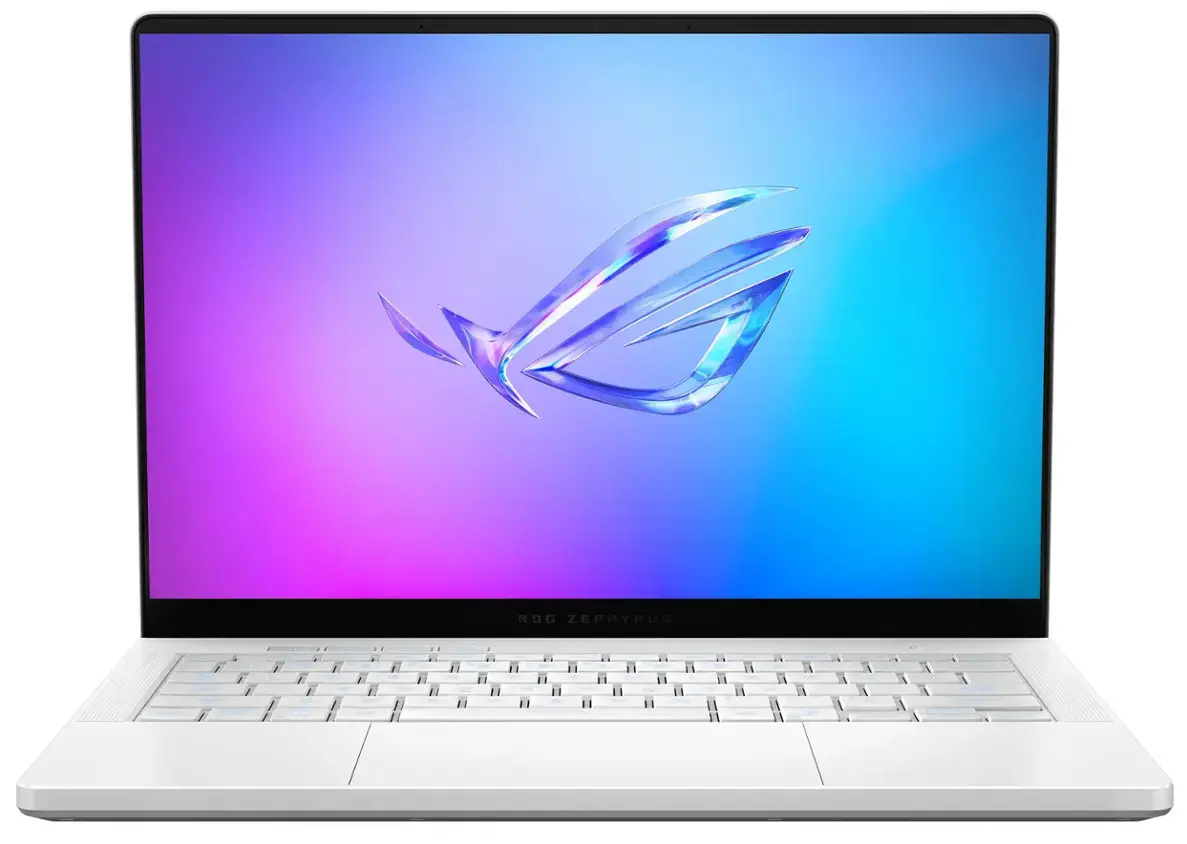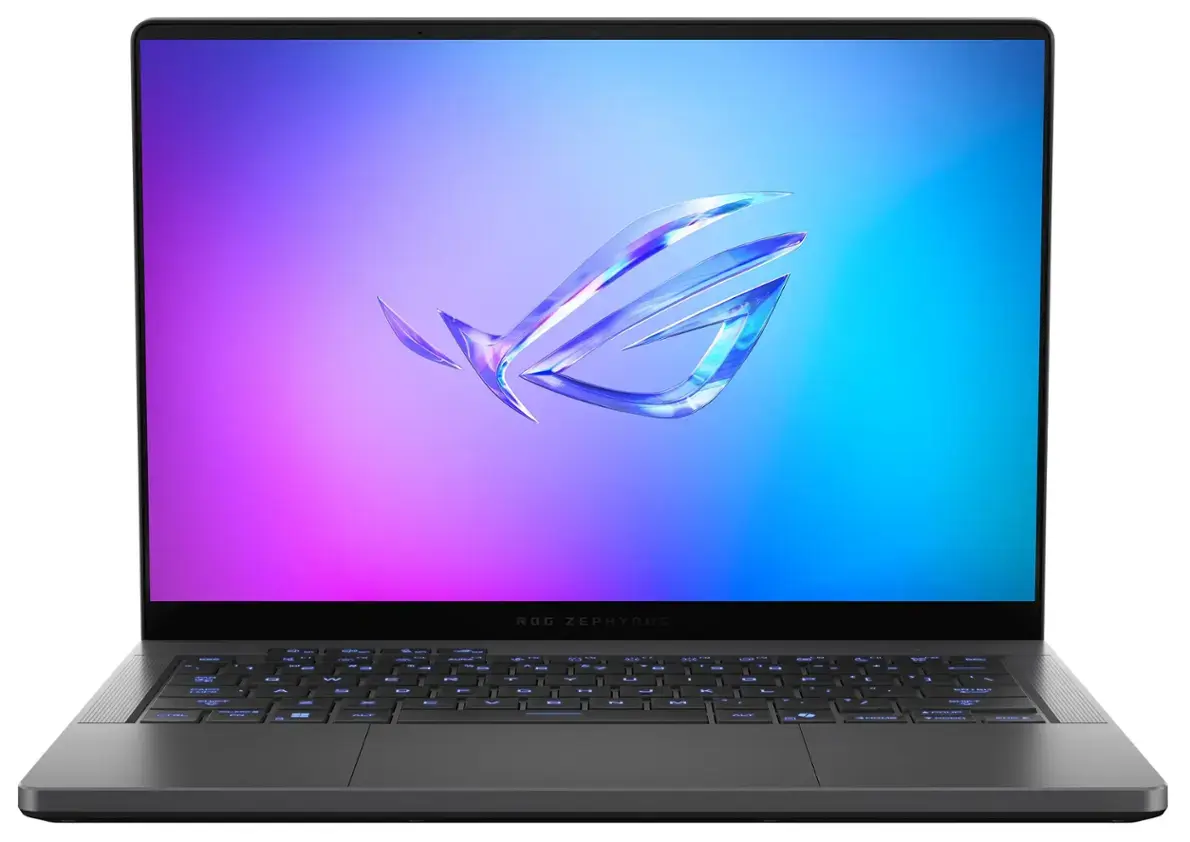ASUS Zephyrus G14 (2025) Review: One Great Laptop, Two Key Issues
June 12, 2025
|
G14 - What You Need to Know
Summary
The Zephyrus G14 is a sleek, premium Windows laptop packed with impressive hardware in a compact form factor, but it comes with trade-offs.
Table of contents:
Laptops in this Article
14 Inches | 512 GB | 24 GB | M4 Pro 12-Core | M4 Pro 16-Core GPU
On Sale
Great Deal
14 Inches | 1 TB | 32 GB | Ryzen 9 8945HS | RTX 4070
On Sale
14 Inches | 1 TB | 32 GB | Ryzen AI 9 HX 370 | RTX 5070 Ti
Best Price Ever
Good Deal
Summary
The G14 packs premium performance into a stylish and portable 14-inch design. But, it runs warm during all types of use and its GPU doesn’t quite reach its full potential due to power constraints. If you're sensitive to heat or want to maximize gaming performance, this might not be your best bet. But for those who value portability with strong CPU performance and decent GPU chops, it’s still one of the most compelling compact gaming laptops available.
14 Inches | 1 TB | 32 GB | Ryzen AI 9 HX 370 | RTX 5070 Ti
Pros
- Extremely well built
- Very light and portable for a gaming laptop
- Offers excellent performance for its size
- Speakers sound great
Cons
- GPU is fed low wattage during gaming and underperforms
- Screen should be brighter in 2025
- Always feels warm, even in light use
Best Price Ever
Best Price Ever
Specs We Tested
- CPU: AMD Ryzen 9 HX 370 (Zen 5)
- GPU: NVIDIA RTX 5070 Ti (12GB VRAM)
- RAM: 32GB
- Storage: 1TB SSD
- Display: 14", 2880x1800 OLED, 120Hz
Performance Modes & Thermal Behavior
The G14 offers four stock performance modes via ASUS’s Armoury Crate. Even in silent mode, the Ryzen 9 HX 370 performs admirably. But the laptop’s compact chassis leads to warm keyboard and palm rest areas—noticeable even during light web browsing.
We experimented with both ASUS’s stock settings and third-party tuning software GHelper. GHelper’s Turbo mode performed slightly better than ASUS’s own, and its cooler temps made for a more enjoyable experience. However, peak gains were modest (~2%).

In Turbo mode, the CPU/GPU combo rarely pulled more than 115W combined. It has a lower max limit of 120W which is common with thin-and-light gaming laptops, but it’s something buyers should be aware of.
Constant Warmth: The G14's Biggest Flaw
Whether gaming, browsing, or working in Office, the G14 stays consistently warm to the touch. The keyboard and palm rest areas heat up even in light use. For some users (like Josh in our testing), this was frustrating. If you're heat-sensitive, this laptop may not be for you.

On the flip side, thermal improvements over last year’s G14 are notable. The thicker chassis and vapor chamber design in the 5070 Ti+ configurations make a difference—just not enough to eliminate discomfort.
CPU Performance: Class-Leading for Its Size
In Geekbench and Cinebench tests, the Ryzen 9 HX 370 outpaces its predecessor (Zen 4). Multi-core scores lag behind AMD’s larger and more power-hungry chip the HX3D, as well as the M4 Pro MacBook Pro. They still remain impressive for this size.

Worth noting: Despite the “HX” label, this CPU is not AMD’s top-tier chip. The HX3D found in bulkier laptops still performs better—but only with a much larger chassis and higher power envelope.
GPU Performance: Underfed and Underwhelming
GPU results are more mixed. The RTX 5070 Ti in this G14 consistently underperforms compared to the same GPU in thicker laptops like the Strix G16. In 3DMark TimeSpy and Port Royal, we saw a ~18% performance drop due to limited power delivery.

Despite this, it's a solid step up from last year's 4070 version. If you're choosing between a 5070 and a 5070 Ti, we strongly recommend the latter due to the growing importance of VRAM in modern games (8GB is the baseline now).
Just be cautious—if you go for the 5080 model, the added GPU tier might come with even more power constraints than the 5070 Ti.
Real Gaming Results: Good, Not Great
We tested the G14 in games like Cyberpunk 2077, Forza Horizon 5, and Monster Hunter Wilds. Results were decent, but 1% lows in particular showed some weakness. DLSS helped, but the GPU bottleneck remains.
Most modern games are playable at high settings, but we recommend dropping resolution or quality for smoother frame pacing—especially in demanding titles. Overall, expect a 30–50% performance uplift from last year’s G14 with a 4070 (depending on the title), but not the full potential of the RTX 5070 Ti.

Battery Life: Better Than Before
Our updated testing showed a battery life of ~11.5 hours in light use and ~8 hours in an office productivity workload. That’s a meaningful improvement over previous generations, aided by Zen 5’s power efficiency.

Display, Build, and Features
- Display: 14” OLED (2880x1800) @ 120Hz. Beautiful color, decent brightness (~500 nits), GSync support. Glossy finish leads to some reflections.
- Chassis: Aluminum, sturdy, and stylish. Squared edges can dig into wrists slightly. Two chassis options: thinner (5060/5070) or thicker (5070 Ti/5080).
- Keyboard: Comfortable and quiet, though less clicky than some may prefer. RGB lighting included.
- Weight: Slightly heavier than last year’s G14, but still very portable.
Final Verdict: Should You Buy the G14?
If you're looking for a highly portable gaming laptop with strong CPU performance, good battery life, and a premium design—the 2025 Zephyrus G14 is a solid pick. Just be aware of the heat and the GPU's limited headroom.
If you can afford the 5070 Ti model, it's the sweet spot—offering enough VRAM for modern games and strong all-around performance. But if you value GPU power over portability, step up to a Zephyrus G16 or a thicker chassis like the Strix G16.
Alternatives to Consider:
- Zephyrus G16 (2025): Better thermal performance and a more immersive display.
- MacBook Pro 14 (2024): If you're not a gamer, you may enjoy the more premium creature comforts of a MacBook Pro with an M4 Pro chip or above.
Pros
- Extremely Powerful
- Long Battery Life
- Extremely Power Efficient
- Excellent Keyboard and Trackpad
- Fantastic Display - High Resolution, Fast Refresh Rate, Bright
- Minimal Fan Noise (If Any)
- Excellent Speakers
- Good Webcam
- Lots of Memory as Standard
Cons
- No Wi-Fi 7
- Expensive
- Last year's G14 (2024): If found on sale, still a great value with similar looks and feel. A good option if performance isn't your highest priority.
Pros
- OLED screen is pleasant to look at
- Very compact and portable
- All round premium laptop - speakers, display, trackpad are all good
- Minimal fan noise for light use
Cons
- Almost always feels warm
- Older AMD processor performs a little worse than Zen 5
- Screen isn't the brightest at under 400 nits
On Sale



